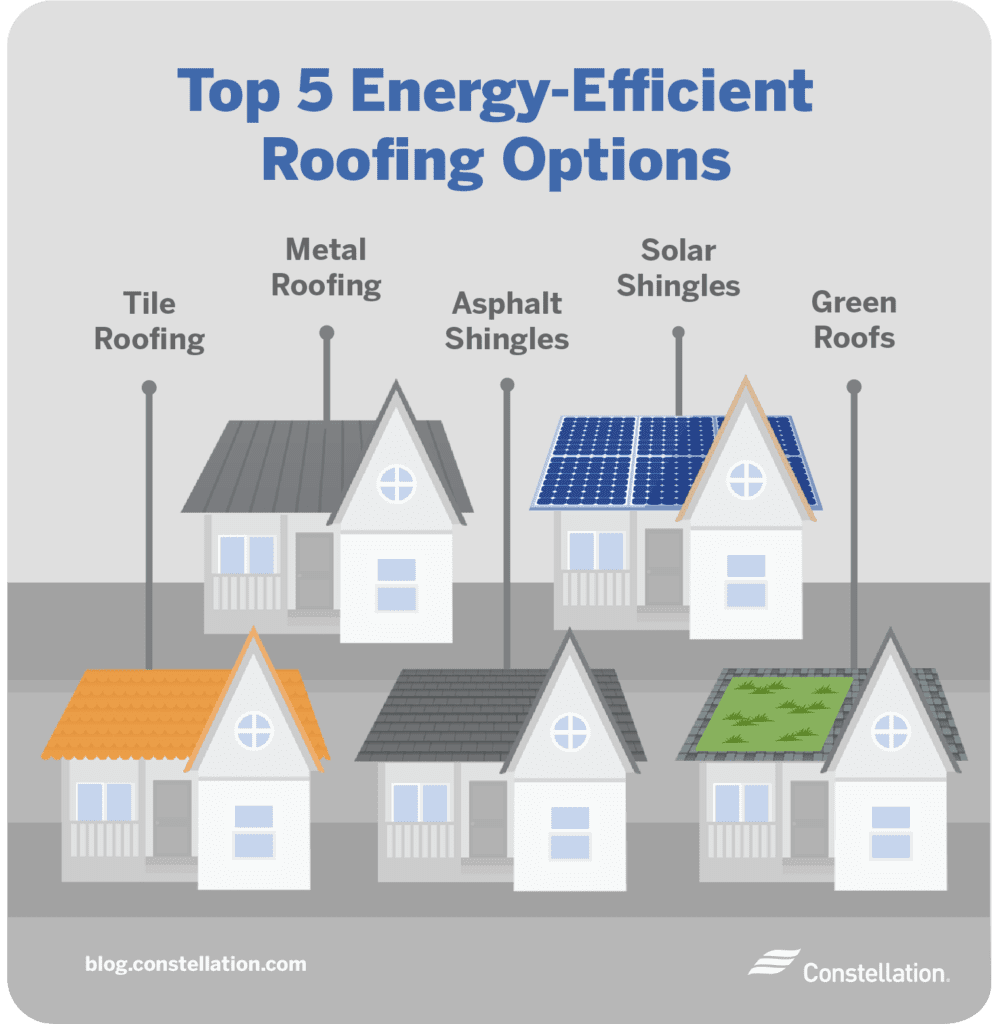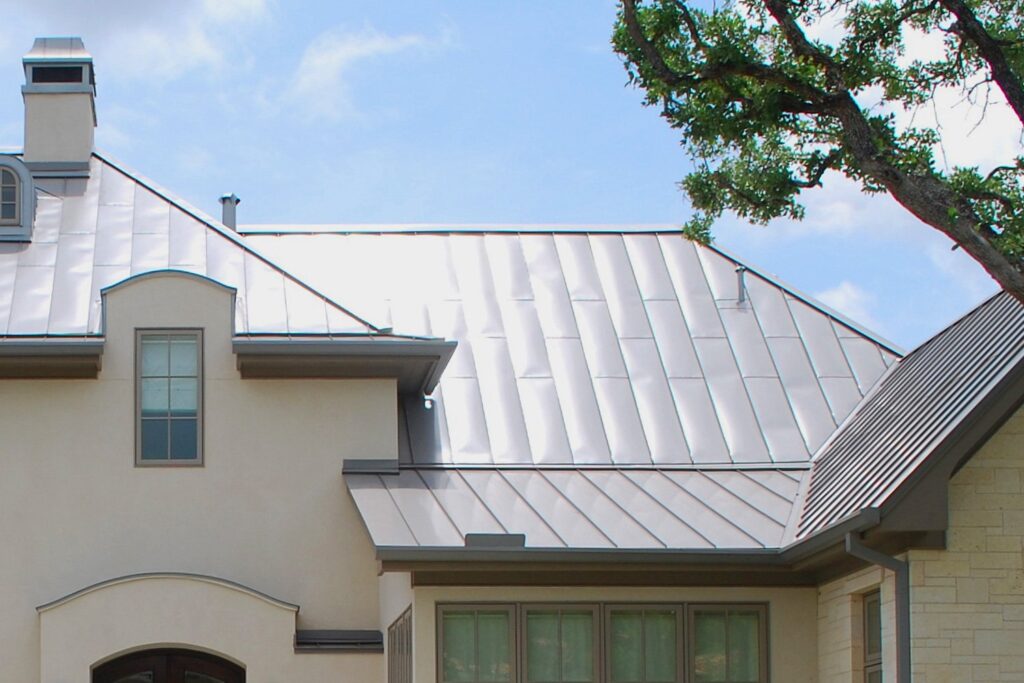Are metal roofs more energy-efficient? This question has been lurking in the minds of homeowners seeking to make their homes more eco-friendly and cost-effective. With the rising concerns surrounding energy consumption and sustainability, it becomes vital to uncover the potential benefits of metal roofing. As you explore this article, you will discover the fascinating realm of metal roofs and how they can potentially save you money while reducing your carbon footprint.
1. Energy Efficiency of Metal Roofs
Metal roofs are known for their excellent energy efficiency, making them a popular choice for homeowners looking to reduce their energy consumption and lower their utility bills. There are several factors that contribute to the energy efficiency of metal roofs.
1.1 Reflectivity of Metal Roofs
One of the key factors that make metal roofs energy-efficient is their high reflectivity. Unlike traditional asphalt shingles, metal roofs reflect a significant amount of solar radiation away from your home. This means that less heat is absorbed into the building, resulting in a cooler indoor temperature. As a result, your air conditioning system doesn’t have to work as hard to maintain a comfortable environment, reducing your energy consumption.
1.2 Insulation Properties
Metal roofs also have excellent insulation properties. They can effectively control the transfer of heat between the outside and inside of your home. During hot summer months, the metal roof acts as a barrier, preventing the heat from entering your home. In the winter, it helps to keep the warm air inside, reducing heat loss. This insulation effect can significantly decrease your reliance on heating and cooling systems, leading to energy savings.
1.3 Ventilation and Airflow
Proper ventilation and airflow are crucial for maintaining energy efficiency in any roofing system. Metal roofs are designed to allow air to circulate freely underneath the roof, preventing the buildup of heat and moisture. This ventilation helps to regulate the temperature in your attic, reducing the strain on your HVAC system. With improved airflow, your cooling and heating systems can operate more efficiently, resulting in energy savings.
1.4 Reduced Heat Transfer
Metal roofs are effective in reducing heat transfer through the roof. Unlike other roofing materials, metal roofs have low thermal mass, which means they don’t retain heat for prolonged periods. This feature allows them to cool down quickly once the sun sets or when there is a change in weather conditions. By reducing heat transfer, metal roofs help to maintain a comfortable indoor temperature throughout the day, reducing the need for excessive heating or cooling.
1.5 Impact on HVAC Systems
The energy efficiency of metal roofs can have a significant impact on the performance and lifespan of your HVAC systems. With reduced heat transfer and improved insulation properties, your heating and cooling systems won’t have to work as hard to maintain a comfortable temperature. This not only leads to energy savings but also extends the lifespan of your HVAC equipment, saving you money on maintenance and replacement costs in the long run.

2. Environmental Impact of Metal Roofs
Aside from their energy efficiency, metal roofs also have a positive environmental impact. They are a sustainable and eco-friendly roofing option that contributes to a greener future.
2.1 Recyclability
One of the most significant environmental benefits of metal roofs is their recyclability. Unlike other roofing materials that end up in landfill sites at the end of their lifespan, metal roofs can be fully recycled. This means that when it’s time to replace your roof, the metal can be melted down and repurposed into new metal products. By choosing a metal roof, you are reducing waste and promoting a circular economy.
2.2 Longevity
Metal roofs have an exceptionally long lifespan compared to other roofing materials. While traditional asphalt shingles may last around 15-20 years, metal roofs can easily last 40-70 years or more with proper maintenance. This longevity reduces the need for frequent roof replacements, minimizing the environmental impact associated with the production, transportation, and installation of new roofing materials.
2.3 Reduced Energy Consumption
As mentioned earlier, metal roofs help to reduce energy consumption by reflecting solar radiation and improving insulation. By consuming less energy for heating and cooling, you are indirectly reducing your carbon footprint and lessening the demand for fossil fuels. Metal roofs contribute to a more sustainable energy future by promoting energy conservation.
2.4 Cool Roofing Benefits
Metal roofs are often referred to as “cool roofs” because of their ability to reflect a significant amount of sunlight, reducing heat absorption. This quality is particularly beneficial in warm climates where excessive heat can be a challenge. By keeping your home cooler, metal roofs decrease the need for air conditioning and help to mitigate the urban heat island effect. This effect occurs when urban areas become significantly warmer than surrounding rural areas due to the absorption and retention of heat by buildings and pavement.

3. Financial Benefits of Metal Roofs
In addition to their energy efficiency and environmental impact, metal roofs offer several financial benefits that make them a cost-effective choice for homeowners.
3.1 Energy Cost Savings
By reducing your energy consumption, metal roofs help to lower your utility bills. With their high reflectivity and insulation properties, you can expect to see significant savings in both your heating and cooling costs. Over the lifespan of a metal roof, these energy cost savings can add up to a substantial amount, making it a wise long-term investment.
3.2 Tax Benefits and Incentives
Many governments and local municipalities offer tax benefits and incentives to encourage homeowners to invest in energy-efficient roofing systems. Depending on your location, you may be eligible for tax credits, rebates, or other financial incentives for installing a metal roof. These incentives can further offset the upfront costs of the roof and improve its overall financial viability.
3.3 Increased Property Value
Metal roofs can also increase the value of your property. Their durability, longevity, and energy efficiency are highly desirable features for potential buyers. A metal roof can significantly enhance the curb appeal of your home and make it more attractive in the real estate market. When it comes time to sell, the investment you made in a metal roof may pay off with a higher resale value and a quicker sale.

4. Considerations and Limitations
While metal roofs have numerous benefits, it’s essential to be aware of some considerations and limitations before making a decision.
4.1 Upfront Costs
One of the main drawbacks of metal roofs is their higher upfront costs compared to traditional roofing materials. The price of metal roofs can vary depending on the type of metal, design, and complexity of the installation. However, it’s important to consider the long-term financial benefits and energy savings that metal roofs offer. Despite the higher initial investment, the overall cost-effectiveness of metal roofs often outweighs the upfront expense.
4.2 Noise Levels
Metal roofs can be susceptible to noise from rain, hail, or other external factors. However, modern metal roofing systems are designed with proper underlayment and insulation to minimize noise levels. If noise is a concern for you, discuss it with your roofing contractor who can recommend solutions to reduce any potential disturbances.
4.3 Maintenance Requirements
While metal roofs are generally low-maintenance, they do require periodic inspections and maintenance to ensure their longevity and performance. Metal roofs may need to be recoated or repainted over time to protect against corrosion, depending on the type of metal used. Regular cleaning of debris, leaves, and other materials is also important to prevent any clogging or damage to the roof. However, compared to traditional roofing materials, metal roofs require less maintenance overall.
4.4 Climate Suitability
The climate in which you live can affect the energy efficiency and performance of a metal roof. Metal roofs are highly effective in hot climates because of their reflective properties. However, in colder climates, they may not retain heat as well as other roofing materials. It’s important to consider your specific climate and consult with a roofing professional to determine the suitability of a metal roof for your location.
In conclusion, metal roofs offer a range of benefits in terms of energy efficiency, environmental impact, and financial savings. With their high reflectivity, excellent insulation properties, and reduced heat transfer, metal roofs can significantly decrease your energy consumption and lower your utility bills. They are also environmentally friendly, recyclable, and contribute to a greener future. Additionally, metal roofs provide financial benefits such as energy cost savings, tax incentives, and increased property value. While there are some considerations and limitations to take into account, the overall advantages and long-term cost-effectiveness of metal roofs make them a worthwhile investment for homeowners looking for a sustainable and energy-efficient roofing solution.
